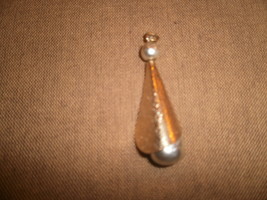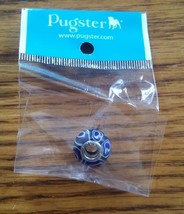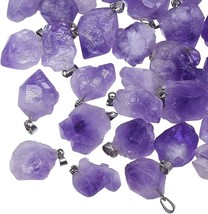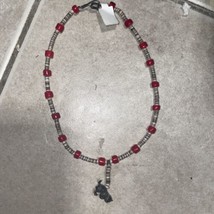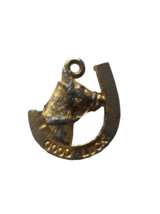Natural Burma Jadeite Jade PI XIU Pendant
Fine Hand Carving Icy Ice Black Green 100% Natural Burma Jadeite Jade PI-XIU Pendant for Prosperity Longevity
With certificate (Authentic Type A Jadeite)
?????? ~ ??????????????????????
????A?????)
*Certificate No - GFR00230111824
*Materials - 100% Natural Jadeite Jade
*Refractive Index - 1.66 (spot measurement)
*Density - 3.33g / cm^3
*Jadeite Size - approx - 44.90mm/36.20mm/14.80mm
*Weight - 45.87 grams
*Carat - 229.35 carats
*Original - Burma
*Package - 1 X Pendant with String / 1 X Gift Box / 1 X Certificate
*Delivery - Worldwide Free Shipping
*Item Video Display Link - https://youtu.be/h5-nRQ9u1tY
Only One Unit Available
************************************************************************
This is an extremely rare and exquisitely handcrafted natural jadeite pendant, belonging to the black green variety of jadeite. Through meticulous craftsmanship, the delicate jadeite material has been intricately carved to depict the mythical creature Pixiu alongside a water caltrops motif. This masterpiece of a pendant comes with a certificate verifying its authenticity as Grade A natural jadeite. Measuring approximately 44.90mm 36.20mm 14.80mm and weighing 45.87 grams, equivalent to 229.35 carats, this pendant is highly sought after by collectors due to its rarity and craftsmanship. Jadeite, as a precious gemstone, is prized for its scarcity and unique beauty, making this pendant a true embodiment of artistic expression and jewelry craftsmanship. The combination of Pixiu and the water caltrops motif carries profound symbolic significance in Chinese culture. Pixiu symbolizes power and wealth, believed to bring good fortune and prosperity, while the water caltrops represents reunion and happiness. Thus, this pendant not only represents an exquisite piece of art but also serves as a symbol of auspiciousness and prosperity. In summary, this jadeite pendant encapsulates the essence of art, jewelry, and culture, making it a highly desirable collectible sought after by discerning collectors and enthusiasts alike.
The Rarity and Collectible Value of Natural Jadeite
Jadeite, often referred to as "imperial jade" due to its historical association with royalty, is a gemstone of unparalleled rarity and enduring collectible value. Its captivating allure lies not only in its exquisite beauty but also in its remarkable geological formation, making it a treasure sought by collectors and connoisseurs worldwide.
1. Geological Rarity: Natural jadeite is exceptionally rare, originating from remote deposits in Myanmar (Burma), where geological conditions of high pressure and low temperature over millions of years have given birth to this magnificent gemstone. It is estimated that less than 1% of jadeite mined globally meets the stringent quality standards for fine jewelry and investment-grade pieces.
2. Vivid Color Palette: Jadeite is celebrated for its diverse and vibrant range of colors, from the iconic imperial green to mesmerizing lavender, radiant white, and fiery reds. The vividness of these hues is unparalleled, and collectors are often drawn to the challenge of acquiring specific colors and shades.
3. Transparency and Texture: The transparency and texture of jadeite are equally important factors contributing to its desirability. Fine jadeite possesses a crystalline clarity that allows light to penetrate and illuminate the gem from within, creating a luminous, almost ethereal quality.
4. Cultural Significance: Throughout history, jadeite has held immense cultural significance in various civilizations, including China, where it symbolizes virtue, integrity, and longevity. This cultural reverence adds an additional layer of allure to jadeite, making it a cherished symbol of heritage and tradition.
5. Investment Potential: Beyond its intrinsic beauty, jadeite is increasingly recognized as a solid investment option. Its scarcity, combined with growing global demand, has resulted in significant appreciation in value over the years. Savvy collectors and investors view jadeite as a tangible asset with the potential for long-term capital appreciation.
6. Expertise and Certification: Due to the nuanced nature of jadeite, it is essential to rely on reputable gemological expertise and certification when acquiring pieces. Certificates from recognized gemological laboratories authenticate the quality, origin, and natural properties of the gem, instilling confidence in both collectors and investors.
7. Heirloom Quality: Jadeite is often considered an heirloom, passed down through generations as a symbol of family heritage and prosperity. Its durability and timeless appeal ensure that it remains cherished for centuries.
In conclusion, the rarity and collectible value of natural jadeite extend far beyond its aesthetic appeal. Its geological formation, captivating colors, and cultural significance make it a gemstone that transcends time and borders. For collectors and investors alike, jadeite represents not only a beautiful adornment but also a tangible piece of history and an enduring store of value.
Jadeite “PI XIU' "????”
Jadeite Pi Xiu carving is a traditional Chinese craft. Pi Xiu is a mythical creature in ancient Chinese mythology that is believed to bring luck and protection. Therefore, jadeite Pi Xiu carving is often seen as a symbol of good fortune and protection. Jadeite is a precious gemstone that holds an important place in traditional Chinese culture. Pi Xiu is a mythical creature in ancient Chinese mythology that is believed to have the function of guarding and protecting the home. Combining the meaning of jadeite and Pi Xiu, jadeite Pi Xiu carving is usually considered a symbol of good luck and protection and is a popular craft item in ancient Chinese culture. Jadeite Pi Xiu carving is a very complex process, requiring skilled artisans to produce it. The carver will use various tools and techniques to carve out the shape and details of Pi Xiu, making it look lifelike. Jadeite Pi Xiu carving is usually used for decoration or as a gift, and can also be used as a collection. Water chestnut: It refers to the fruit of a plant, which is diamond-shaped and has multiple uses. In Chinese culture, water chestnut symbolizes versatility and comprehensive development because of its shape, which has four corners, each of which has a small triangle, resembling the four directions. Water chestnut also plays an important role in Chinese food culture. It can be used as a staple food or snack, often used to make pastries or stews, with a delicious taste and rich in nutrition.
?????????????
??, ????“????”, ????????????????, ???????????????????????????????????????????, ?????????????, ????????????????????
1. ?????: ????????, ??????????) ?????????????????????????, ????????????????, ????????, ???1%???????????????????
2. ???????: ?????????????????????, ???????????????????????????????????????????, ????????????????????
3. ??????: ???????????????????????????????????, ??????????????, ??????????????
4. ????: ?????????????????, ?????????, ?????, ????????????????????????????, ???????????????
5. ????: ????????, ???????????????????????????????????, ??????????????????????????????????????????
6. ???????: ?????????, ?????????????????????????????????????????????????????????, ?????????????
7. ????: ?????????????, ????, ????????????????????????????????
??, ????????????????????????????????????????????????????????????????????, ?????????????, ??????????????????????????
????????????, ??????????????????????????, ???????????????????????????, ????????????????, ????????????, ?????????????????, ?????????????????????????????????, ??????????????, ?????????????, ????????, ??????????????, ????????????, ?????????????, ???????????????????
?????????????????????????, ?????????????????????, ????????????????????????????, ????A????????????44.90mm 36.20mm 14.80mm, ???45.87?, ???229.35??????????????, ?????????????????????????????????????, ???????????, ????????????????, ??????????, ???????????????, ?????????????????, ????????????????????, ?????????????????????, ????????????, ?????
????: ??????????????, ??????????????????????????????, ????????????????????????????????, ?????????????????
??: ????????, ???, ????????????, ??????????????, ??????????, ??????????, ??????????????????????????, ????????????, ?????????????, ????, ?????

 Icy Ice Black & Green Natural Burma Jadeite Jade PI XIU Pendant # 229.35 carat # added to cart.
Only one available in stock
Icy Ice Black & Green Natural Burma Jadeite Jade PI XIU Pendant # 229.35 carat # added to cart.
Only one available in stock
 Please wait while we finish adding this item to your cart.
Please wait while we finish adding this item to your cart.

































